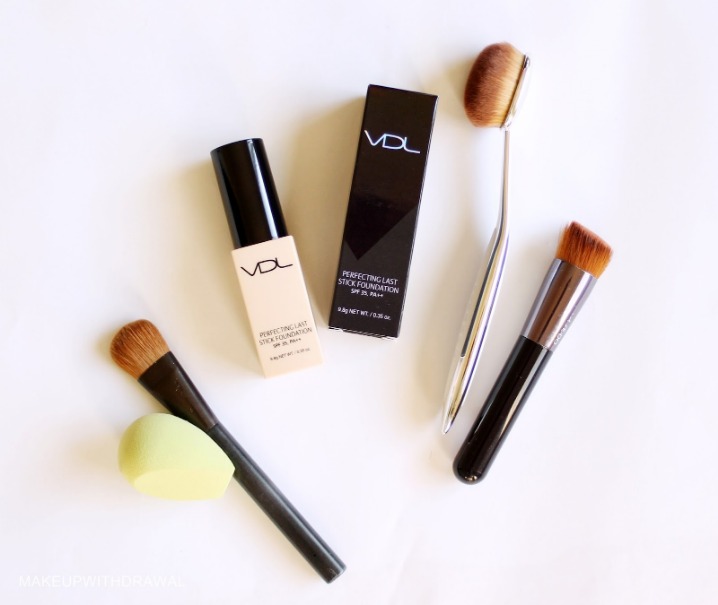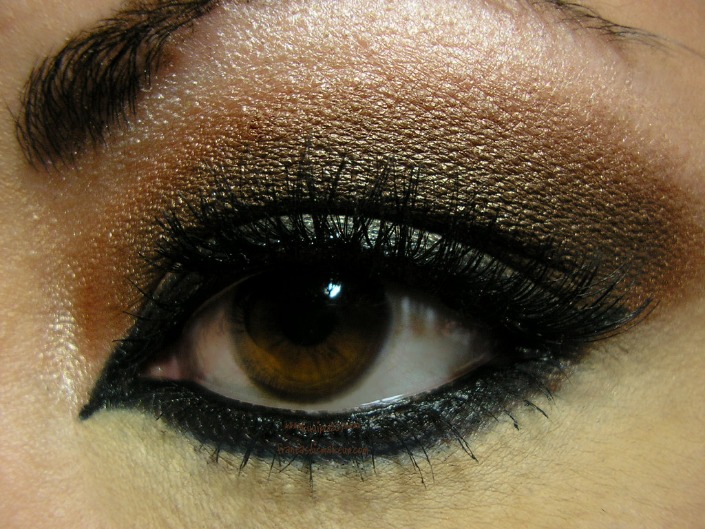Types of Makeup Foundations
Foundation is a essential makeup product that provides a base for creating a flawless and even complexion. There are various types of foundations available, each designed to suit different skin types and desired finishes. Whether you prefer a lightweight, natural look or full coverage for special occasions, understanding the different types of makeup foundations can help you achieve your perfect look.
Liquid Foundation
Liquid foundation is one of the most popular types of makeup foundations due to its versatile coverage and easy application. It offers a smooth, dewy finish and is suitable for a variety of skin types, from dry to oily skin. Liquid foundations come in different formulations, including matte, satin, and luminous finishes, allowing users to choose based on their desired look. They are available in a wide range of shades to match different skin tones perfectly. Application methods typically involve using a brush, sponge, or fingers to blend the product seamlessly into the skin, resulting in a natural or full-coverage look depending on the amount applied.
Powder Foundation
Powder foundation is a popular type of makeup foundation known for its lightweight feel and matte finish. It is typically available in pressed or loose form and is suitable for all skin types, especially oily and combination skin. Powder foundation provides buildable coverage, allowing for a natural look or fuller coverage depending on application. It is easy to blend and offers a quick, touch-up solution throughout the day. Additionally, powder foundations often contain ingredients that absorb excess oil, helping to control shine and reduce the appearance of pores. They are ideal for those seeking a convenient, mess-free option that provides a smooth, radiant complexion.
Cream Foundation
Cream foundation is a popular type of makeup foundation known for its rich, creamy texture that offers full coverage and a smooth, flawless finish. It is ideal for those with dry or mature skin, as it provides added moisture and a hydrated look. Cream foundations are versatile and can be applied with a brush, sponge, or fingers, allowing for buildable coverage to conceal blemishes, redness, or uneven skin tone. They typically come in compact or jar packaging, making them easy to blend and layer for a natural or more dramatic makeup look. This type of foundation is favored for its long-lasting coverage and ability to create a luminous, satin finish that enhances the skin’s appearance throughout the day.
Stick Foundation
Stick foundation is a popular type of makeup foundation known for its portability and ease of use. It offers buildable coverage and is suitable for various skin types, making it a versatile choice for many. Designed in a solid form, stick foundation is easy to apply directly to the skin and blend seamlessly for a smooth, natural finish.
- Convenient and portable: Ideal for on-the-go application.
- Buildable coverage: Can be layered for more coverage without a cakey appearance.
- Suitable for various skin types: Available in formulas catered to oily, dry, or combination skin.
- Precise application: The stick shape allows for targeted coverage on specific areas.
- Long-lasting finish: Typically provides a durable makeup look throughout the day.
Tinted Moisturizer
Foundation for makeup comes in various types, each offering different coverage and finishes to suit individual preferences. Among these, tinted moisturizers are a popular choice for those seeking a lightweight, natural look. They provide a subtle hint of color while hydrating the skin, making them ideal for daily use or for people with dry or sensitive skin. Other common types of foundations include liquid, cream, powder, and stick foundations, each designed to cater to different skin types and desired looks. Liquid foundations generally offer buildable coverage and a dewy finish, perfect for a natural or polished appearance. Cream foundations provide fuller coverage and are suitable for dry or mature skin. Powder foundations are excellent for oily skin and deliver a matte finish, while stick foundations are convenient for on-the-go application and provide full coverage. Choosing the right foundation depends on skin type, coverage needs, and personal preference to achieve the desired makeup look.
Choosing the Right Foundation for Your Skin Type
Selecting the perfect foundation for your skin type is essential for achieving a flawless and natural makeup look. Understanding whether your skin is oily, dry, sensitive, or combination helps in choosing a formulation that enhances your features while providing comfort throughout the day. With so many options available, knowing the right foundation can make a significant difference in your overall makeup experience and appearance.
Oily Skin
Selecting the right foundation for oily skin is essential to achieve a matte finish and prevent excess shine throughout the day. Look for oil-free or mattifying formulas that help control sebum production and minimize the appearance of pores. Liquid foundations labeled as “oil control” or “matte finish” are ideal, as they provide buildable coverage without clogging pores. Powders can also be a good option, as they help absorb excess oil and give a smooth, shine-free look. Remember to choose a shade that matches your skin tone for a natural appearance, and always consider primers formulated for oily skin to enhance longevity. Proper skin prep and using the right foundation can leave your skin looking flawless and fresh all day long.
Dry Skin
Choosing the right foundation for dry skin is essential to achieve a flawless look without emphasizing dryness or flakiness. The goal is to select a product that provides moisture, smooths the skin’s texture, and offers a natural finish.
- Look for hydrating formulas that contain ingredients like hyaluronic acid, glycerin, or aloe vera, which help retain moisture and improve skin elasticity.
- Opt for liquid or cream foundations instead of powders, as they tend to provide more hydration and a dewy finish suitable for dry skin.
- Choose buildable foundations to allow layering without caking or emphasizing dry patches.
- Test the foundation on your jawline to check for a seamless match and how it interacts with your skin’s texture.
- Consider foundations with added skincare benefits, such as moisturizing or nourishing ingredients, for a healthier appearance.
Combination Skin
Finding the perfect foundation for combination skin can be a game-changer in achieving a flawless look. Combination skin typically features a mix of oily areas, like the T-zone, and drier patches on the cheeks or jawline. Choosing a foundation that balances these needs is essential for a natural and comfortable finish. Look for lightweight, oil-free formulas that provide matte coverage in shine-prone areas while offering hydration and a dewy finish on drier zones. Liquid foundations with a satin or semi-matte finish are often ideal, as they help control oil without accentuating dry patches. Additionally, opting for buildable coverage allows you to customize your look based on your skin’s needs. Remember to pair your foundation with a suitable primer to further control oil and create a smooth base. Testing shades in natural light and selecting a tone that seamlessly blends into your neck will ensure your makeup looks natural and evenly matched. With the right foundation, your combination skin can look fresh, balanced, and radiant all day long.
Sensitive Skin
Choosing the right foundation for sensitive skin is essential to achieve a flawless look without causing irritation or breakouts. It’s important to select products that are gentle, nourishing, and suited to your specific skin needs to ensure comfort and longevity throughout the day.
- Look for foundations labeled as hypoallergenic to minimize the risk of allergic reactions.
- Opt for formulations that are free from fragrances, alcohol, parabens, and dyes, which can irritate sensitive skin.
- Choose mineral-based foundations, as they tend to be gentler and provide a natural finish.
- Test new products on a small patch of skin before full application to check for adverse reactions.
- Consider using a hydrating or calming primer underneath to protect sensitive skin and improve product adherence.
- Always remove your makeup thoroughly at night to prevent clogged pores and irritation.
Foundation Formulation and Finish
Foundation formulation and finish are essential aspects of creating a flawless makeup look. The formulation determines the coverage, texture, and longevity of the product, while the finish influences the overall appearance and feel on the skin. Choosing the right foundation formulation and achieving the desired finish can enhance natural beauty and boost confidence. Whether opting for a matte, dewy, or satin finish, understanding these elements ensures a perfect complexion every time.
Matte Finish
Foundation formulation and finish play a crucial role in achieving a flawless makeup look. The formulation determines how well the foundation blends onto the skin, its longevity, and how it interacts with other products. It can be crafted in various textures, such as liquid, cream, powder, or stick, to suit different skin types and preferences. The finish of the foundation is equally important, with options ranging from dewy and luminous to matte. A matte finish, in particular, is preferred by those with oily skin or for a long-lasting, shine-free appearance. It helps to reduce the appearance of pores and create a smooth, velvety surface, making it ideal for events or long wear. Choosing the right foundation formulation and finish depends on skin type, desired look, and specific makeup needs.
Color Matching and Shades
Color matching and shades play a crucial role in choosing the perfect foundation for a flawless makeup look. Understanding undertones and selecting the right shade ensures that your skin appears natural and radiant. Proper color coordination helps to create a seamless blend, enhancing your overall appearance and confidence.
Determining Your Undertone
Choosing the right foundation is essential for achieving a natural and flawless makeup look. A key aspect of selecting the perfect shade involves understanding color matching and shades, as well as determining your undertone to ensure harmony with your skin.
Color matching involves finding a foundation shade that seamlessly blends with your skin tone without appearing too light or dark. Shades are typically categorized into cool, warm, and neutral tones, which correspond to the undertones of your skin. Knowing your undertone helps you select a foundation that complements your natural complexion.
- Determine Your Undertone: Examine the veins on your wrist; if they appear blue or purple, you likely have cool undertones. If they look green, you probably have warm undertones. If you see a mix of both or have difficulty deciding, you may have neutral undertones.
- Test Foundation Shades: Apply small swatches of different shades along your jawline and observe which blends seamlessly without a noticeable line. Natural daylight offers the most accurate view of how the foundation matches your skin.
- Consider Shade Variations: Be aware that foundation shades often have variations labeled as “warm,” “cool,” or “neutral,” and choosing the right variation ensures your overall makeup looks harmonious.
Selecting the Correct Shade
Choosing the right shade of foundation is essential for creating a natural and flawless makeup look. Proper color matching ensures that the foundation seamlessly blends with your skin tone, enhancing your features without looking obvious or mismatched. When selecting a shade, consider your skin’s undertone—whether it is cool, warm, or neutral—as this will guide you towards the most complementary hue. Testing shades in natural light and applying small samples to your jawline can help you determine the best match. Keep in mind that your skin tone may change slightly with seasons or sun exposure, so it’s a good idea to reassess your shade regularly. By carefully matching your foundation to your skin tone and understanding shades, you can achieve a balanced, harmonious complexion that looks both natural and radiant.
Tips for Testing and Matching
Color matching and choosing the right shades are essential steps in achieving a flawless foundation application. Understanding your skin’s undertone—whether cool, warm, or neutral—helps in selecting shades that complement your natural complexion. It’s important to test foundation in natural light and on different areas of your face to see how it blends without leaving a visible line.
When testing for the perfect shade, apply small swatches along your jawline or cheek to compare with your neck. Allow the foundation to set for a few minutes to observe how it looks after oxidation. Always consider your skin type and the finish you prefer, such as matte, dewy, or satin, to ensure a seamless blend.
Tips for matching include using a clean brush or sponge to apply the product evenly and stepping back to view the overall effect. If you’re trying new shades, do patch tests in different lighting conditions to ensure the color remains a good match throughout the day. Additionally, blending the foundation into your hairline and neck can help achieve a natural transition and avoid stark contrasts.
Application Techniques
Application techniques play a crucial role in achieving a flawless makeup look, especially when it comes to applying foundation. Proper methods can enhance the skin’s natural beauty, create an even base, and ensure that makeup lasts longer throughout the day. Understanding various techniques allows you to customize your routine to suit your skin type and desired finish, resulting in a more polished and professional appearance.
Preparing the Skin
Preparing the skin properly is essential for achieving a flawless foundation application. Start by cleansing the skin to remove dirt, oil, and impurities, creating a clean surface. Follow with a gentle exfoliation to slough off dead skin cells, ensuring the skin texture is smooth. Next, apply a hydrating moisturizer suited to your skin type to provide a plump, even base. Using a primer can also help to minimize the appearance of pores, control oil, and extend the wear of the foundation. Finally, wait a few minutes after applying primer before beginning to apply your foundation to allow it to set and maximize adhesion.
Using Brushes
Using brushes for foundation application allows for a smooth, even, and professional finish. Start by selecting a flat or dense kabuki brush, which is ideal for applying liquid or cream foundation. Dab the brush lightly into the foundation, ensuring it is not overloaded, to prevent streaks. Begin application at the center of the face, such as the nose and cheeks, and gently sweep outward in circular or stippling motions. This technique helps blend the product seamlessly into the skin. Clean your brushes regularly to maintain hygiene and prevent bacteria buildup, which can affect your skin. For targeted coverage in areas like around the nose or under the eyes, use a smaller, detail brush to precisely blend and distribute the product. Using the right technique with brushes enhances the foundation’s longevity and creates a flawless, natural-looking base for the rest of your makeup.
Sponge Application
Sponge application is a popular and effective technique for applying foundation, providing a smooth and natural finish. To achieve the best results, start by dampening the sponge with water and squeezing out excess moisture. This helps prevent streaks and allows for a more even distribution of the product. Pour or dollop a small amount of foundation onto the back of your hand or a palette. Gently dab the sponge into the foundation, then press and bounce the sponge onto your skin, focusing on areas that need more coverage. Use a stippling motion for a lightweight, airbrushed look or a patting motion for fuller coverage. Blend the foundation seamlessly into your skin, working from the center outward and around the edges of your face. Clean the sponge regularly to avoid bacteria buildup and maintain a flawless finish. Sponge application is versatile and suitable for all skin types, making it a preferred method for many makeup enthusiasts.
Fingertip Application

Fingertip application is a popular technique for applying foundation, offering precision and control. To begin, ensure your hands are clean to prevent bacteria transfer. Dot small amounts of foundation onto your forehead, cheeks, nose, and chin using your fingertips. Gently blend the product outward in circular motions, paying attention to areas that need more coverage. This method allows for a natural finish and is especially effective for lightweight or medium coverage foundations. Be sure to blend well around the jawline and hairline to achieve a seamless look. Fingertip application is ideal for quick and effortless foundation application, giving your skin a smooth, even base.
Blending Tips
Applying foundation with the right techniques and blending tips is essential for achieving a flawless makeup look. Begin by choosing a foundation that matches your skin tone and type, whether liquid, powder, or cream. Start with a small amount and build coverage gradually to avoid overload. Use a clean, damp beauty sponge or a foundation brush to apply the product, starting from the center of your face and moving outward for a seamless finish.
To blend foundation effectively, use gentle, tapping motions rather than dragging or swiping. Pay special attention to blending along the jawline, hairline, and around the nose to eliminate any harsh lines and create a natural transition. For areas that need extra coverage, layer additional product carefully and blend thoroughly. For a more luminous finish, mix a small drop of primer or luminous moisturizer into your foundation before application.
Conclusion: Proper application techniques and blending tips are key to achieving a smooth, even complexion. Take your time to blend well for a professional look that enhances your natural beauty.
Common Mistakes to Avoid
Choosing the right foundation is essential for achieving a flawless makeup look, but many people make common mistakes that can affect the final result. Being aware of these pitfalls can help you enhance your appearance and ensure your foundation lasts longer and looks more natural. In this article, we will discuss the key mistakes to avoid when selecting and applying foundation for a perfect finish.
Incorrect Shade Selection
One of the most common mistakes to avoid when applying foundation is selecting the incorrect shade. Choosing a shade that doesn’t match your skin tone can result in a noticeable line or an unnatural appearance. It’s important to test the foundation on your jawline or neck to ensure a seamless blend with your natural skin. Additionally, many people tend to select a shade that is too light or too dark, which can create an unbalanced look. Always evaluate the foundation in natural light and consider multiple lighting conditions before making your final decision. Proper shade selection enhances your natural beauty and ensures a flawless, natural finish for your makeup look.
Applying Too Much
One common mistake to avoid when applying foundation is using too much product, which can lead to a heavy, cakey appearance. It’s tempting to layer on more to cover imperfections, but this often results in an unnatural finish. Instead, start with a small amount and build up gradually to achieve the desired coverage. Overapplying can also clog pores and cause makeup to settle into fine lines, making it look less flawless. Remember, less is more; better to use multiple light layers than one thick layer that can be difficult to blend evenly. Additionally, applying too much foundation around sensitive areas like the eyes and nose can accentuate dryness and fine lines. Aim for a light, even application using the right tools and techniques to ensure a natural, polished look that enhances your features without appearing heavy or overwhelming.
Skipping Primer or Skincare
When applying foundation for makeup, avoiding common mistakes can significantly improve your overall look and skin health. One of the most frequent errors is skipping the primer or skincare routine before applying foundation, which can lead to uneven application and lasting issues like breakouts or dryness. Preparing the skin properly ensures a smoother, more natural finish and helps your makeup stay in place longer.
- Not Cleansing and Moisturizing: Skipping these steps can cause foundation to cling to dry patches or imperfections.
- Ignoring Primer: Without primer, foundation may settle into fine lines, pores, and uneven areas, resulting in a less flawless look.
- Applying Foundation Too Thickly: This can create a cakey appearance and emphasize texture instead of blurring imperfections.
- Using the Wrong Shade or Formula: Picking a shade that doesn’t match your skin tone or a formula unsuitable for your skin type can lead to unnatural results or excess oiliness.
- Neglecting to Blend Properly: Not blending foundation well can leave visible lines and uneven coverage, especially around the jawline or hairline.
Maintaining and Long-Lasting Foundation
A strong and long-lasting foundation is essential for achieving a flawless makeup look that staysPut throughout the day. Proper maintenance and careful selection of products can ensure your foundation remains fresh, even in challenging conditions. Understanding the right techniques and tips can help you maintain a durable base that enhances your natural beauty and boosts your confidence.
Setting Powder and Sprays
Achieving a long-lasting and flawless makeup look begins with choosing the right foundation, setting powder, and sprays. Proper application and maintenance of these products ensure your makeup stays fresh throughout the day.
- Start with a clean and moisturized face to create a smooth base for your foundation.
- Apply a primer suited to your skin type to enhance longevity and improve texture.
- Choose a foundation that matches your skin tone and type for a natural finish, and blend it evenly using brushes, sponges, or fingers.
- Set your foundation with a translucent or setting powder to absorb excess oil and prevent creasing.
- Use a setting spray after applying all makeup to lock everything in place and add a dewy or matte finish depending on your preference.
- To maintain your makeup throughout the day, periodically lightly blot your face with a tissue to remove excess oil without disturbing the base.
- Reapply a light touch of setting spray to refresh and prolong the wear of your makeup.
- Choose long-wear, transfer-resistant products designed for extended use for maximum durability.
- Remove makeup carefully at the end of the day with a gentle cleanser to prevent skin strain and maintain skin health.
Touch-up Techniques
Maintaining a long-lasting foundation is essential for a flawless look throughout the day. To achieve this, start with a clean, moisturized face to ensure even application. Using a primer before the foundation helps to create a smooth base and improves longevity. Apply the foundation with a brush, sponge, or fingers, blending seamlessly into the skin. Setting the foundation with a translucent powder can reduce shine and increase durability. Throughout the day, carrying a small setting spray can help to refresh and lock in the makeup, keeping it looking fresh longer.
Touch-up techniques are vital to maintain the appearance of your foundation without creating a cakey look. Use a damp sponge or a clean brush to gently blend any areas that need a quick refresh. For spot corrections, apply a small amount of foundation or concealer only where needed, then blend the edges seamlessly. To minimize the appearance of excess product or shine, lightly dust with translucent powder. Remember to blot oily areas before touching up to absorb excess oil and prevent dullness or streaks. Regular touch-ups using these methods will ensure your foundation stays fresh and natural throughout the day.



